- Home
- Gail Godwin
Publishing Page 4
Publishing Read online
Page 4
The morning of the twenty-eighth, a Monday, began on a note of anxiety. I lurked in my hotel room at the Americana and listened to the constant phone-ringing and opening and shutting of doors across the hall, where a university had taken an interviewing suite. To calm myself I started transcribing in my journal what I was overhearing from the hall.
Knock knock
(no answer)
Knock knock
(Door opens) Yes? (rather angrily)
Hello, I’m . . . mumble.
Oh, yes. Happy to meet you. Would you mind waiting outside for just a few more minutes? We’re still . . . mumble, mumble.
Oh, sorry, I . . .
(Door slams. Some seconds go by. We hear the unclicking of the candidate’s briefcase. Checking his vita sheet to make sure he still exists?)
Whenever I had something important to prepare for, I paced myself. Bathe and meditate on event ahead; prepare answers if necessary. Write in journal. Slowly dress. Apply makeup. I was still in pajamas and robe, having set my room service tray outside the door. That’s when I saw the “University of Indiana” sign posted on the door opposite. I myself had a job interview with that institution in midafternoon. Was it a good sign or a bad sign that their suite was right across the hall? At least I now knew better than to knock on the door too early, like that last unfortunate candidate. Also I would be coming directly from lunch with my editor; how many job applicants could breeze in fresh from a lunch with their editor?
The phone rang and it was an old UNC classmate, Frank Crowther. He lived in Greenwich Village, was on the masthead of the Paris Review, and was working on a long novel, What if Laughter Were Tears? which he had begun back in Chapel Hill after getting out of the Marines.
“So you’re here. Come downtown and I’ll treat you to lunch at the Red Lion.”
“I’m having lunch with my editor at Knopf today.”
“Who is your editor?”
“David Segal.”
“But—he just died.”
“That’s not very funny, Frank.”
“You haven’t seen this morning’s Times?”
“No. What—”
A rustle of newspaper on his end; in a subdued voice he began to read:
David I. Segal, a senior editor of Alfred A. Knopf, Inc., publishers, who was known for his encouragement of talented new authors, died yesterday, apparently of a heart attack, at his home, 280 Riverside Drive. He was 42 years old.
So instead of lunch with my editor, I was taken by my agent to meet the editor in chief and publisher at Knopf, who would assign me a new editor. (John Hawkins had been trying to get through to me while I was still listening to Frank reading David’s obituary.)
“What kind of editor would you like to work with?” was Robert Gottlieb’s first question to me in his office, and I replied rather pompously, “Well, it will have to be someone who appreciates great literature,” then burst into sobs.
I still cringe when I recall this unfortunate opening to our nine-year partnership, but then I remind myself:
1. The first person who took a chance on publishing me had just died in his sleep. David had come out to Iowa with Hawkins to meet me, and I had been charmed by this fat little man, so at home with himself, who loved books and told me I had a rare way of conveying “a sense of wrong.”
2. Only one week before, I had passed my Ph.D. comprehensives and was still stuffed to the gills with Great Literature.
3. I had no teaching job for next year and no savings in the bank and the future looked bleak, especially with my champion dead.
“Yes, Gail, you were crying the first time I met you,” Bob Gottlieb was to remind me more than once during our partnership, which had its affable periods and rocky moments.
“Some marriages are not made in heaven,” Gottlieb would later reflect about our time together in his 1994 Paris Review interview with Larissa MacFarquhar (“The Art of Editing”), but on that late 1970 December day, he waited out my sobs and then said kindly, in response to my Great Literature stipulation, “Well, Gail, I’m afraid that’s going to be me.”
Bob Gottlieb guided and endured me through four books, two of which—The Odd Woman (1974) and Violet Clay (1978)—were finalists for the National Book Award. He wrote one of my recommendations for a Guggenheim fellowship, which I got, and he wrote a letter of protest to Larry McMurtry when McMurtry trashed The Odd Woman in a review. When I turned in an early version of something still called The Angel Keeper but with a vastly changed story from the one David had “flipped over” (it would later become Glass People), Bob wrote me a long letter, which ended, “Please Gail, I don’t want you to ruin your chances,” and so I dispensed with my wonderfully researched science-fiction ending of Cameron Bolt taking back his wife, Francesca, without realizing that the returned version was a high-quality robot.
Having read Great Literature, Bob could always catch me out when I had someone say “as you so beautifully do,” or allowed a character to sunbathe naked next to a sleeping snake.
After I had turned in The Odd Woman, he urged me to add one more thing: “The reader needs to know whether Jane wants to have children. I think you must make this clear. Being a mother completely changes a woman’s life.”
Jane Clifford, a thirty-two-year-old English professor having an affair with a married man, wants tenure and she wants love, but I hadn’t given a single thought to whether she wanted to be a mother. At the time I was thirty-six and hadn’t quite made up my mind on that subject, but most days I did not see myself as a potential mother. However, Jane was not a paper doll of me—she wasn’t a fiction writer, for instance—and I found a way to work out her feelings on the subject by having her, toward the end of the novel, when she has just decided to leave her married lover, make a list of the fates of the five single women featured in George Gissing’s 1893 novel, The Odd Women, which she has been reading. It was fitting for the scholarly Jane to make a list of this kind and then apply it to her life.
Compromise—rebellion against compromise—death
Escape through drink—rehabilitation to “useful member of society”
Finding fulfillment through “others”
Sublimation of personal furies into “a cause”
Starting all over again in a child
The whole passage, like a little personal essay, ran eight pages in a late chapter of The Odd Woman. (I still think the novel would have been fine without it, but maybe it made a difference to some readers.) Jane ends up drawing a line through every word on the list, except “a child,” concluding with this open-ended fillip:
And who knew: though she might never conceive him, she might dream him, sitting in front of her old-maid fire, as Charles Lamb had sat in front of his, telling wonderful stories to her unborn child.
I was to follow up on this idea of “Dream Children” in a later story, my first ghost story, which was also the title of the volume of stories I published with Knopf two years later, in 1976.
While I was checking some dates and facts for this chapter, I looked up Gottlieb and came across his Paris Review interview about the art of editing, which I had somehow missed.
“Some marriages are not made in heaven,” the part about our time together began.
Now, Gail was extremely sensitive, and she viewed herself as a highly successful commercial writer, whereas I viewed her as a rather literary writer with a limited readership. She couldn’t live that way, and eventually, although we worked together very cordially on several books, she moved to Viking. She had shown them a book she was working on, and they saw it the way she saw it—as a major commercial novel—and they paid her a lot of money, and indeed it became a big best-seller and made her famous and successful. I didn’t read her that way, and I still feel that her earlier work, which was less commercial, is more interesting. But she wanted to develop in a different direction, and I’m sure she doesn’t feel that she compromised in any way to do that. In other words, I was the wrong editor-publisher f
or her and she was wise to leave me.
But that’s not how it happened, I thought. How could anyone have gotten me so wrong? I viewed myself as a literary writer who wanted to reach a larger audience and make enough money to take time off from teaching. The events leading up to my leaving Knopf played out with more intricacy and complexity than indicated by Gottlieb’s recollections.
He was the first and only publisher to whom John Hawkins and I gave the first six chapters (250 pages, a third of what would be the finished novel) of A Mother and Two Daughters. Bob read it fast; he had never kept me waiting. “Listen, I like this,” he said, “and it’s fun to read.” He said he loved novels about families and that being an only child had made him a sucker for anything about siblings. He thought I had set up the three women just right: “I don’t mind stopping the sisters to read about Nell [the mother] and you shouldn’t either.” He said he’d given me up for lost the past eighteen months and for us to keep in close touch as I got nearer to the end, because “I know an author doesn’t like to finish a book and have their editor gone.” Then he called Hawkins and offered an advance of twenty-five thousand dollars, slightly more than he had paid for Violet Clay.
I anguished for several days. I knew that an advance is usually divided into four parts: a fourth on signing the contract, a fourth on manuscript delivery, a fourth on hardcover publication, a fourth on paperback publication. Sometimes there is a fifth part: final payment six months after paperback publication. I had hoped to bring in enough cash to let me go two years without teaching. I had been teaching at Vassar, and, at present, was teaching at Columbia. Six thousand a year minus agent’s commission wouldn’t pay for a year. Also, if I accepted Gottlieb’s offer, no other publishers would ever see the book. On the other hand, I liked being a Knopf author, something I had aspired to ever since the Knopf scout turned down my five pages in Chapel Hill in 1958; and I liked it when people asked, “Who is your editor?” and exclaimed, “Oh, he’s the best in the business,” when I told them. Nevertheless I told John Hawkins to decline the offer, and we started putting together a list of publishers I wanted to try.
“I’ve had a rather curious talk with Gottlieb,” John reported the day after. He had called Bob and told him we were declining because I needed a larger advance to live for two years without teaching. Bob had told Hawkins he just couldn’t go any higher and maybe we should look somewhere else. “Then,” John said, “I asked Bob, ‘If we don’t get what we want, can we come back?’ And Bob said, ‘Gail is always welcome to come back. But wait . . . what do I get out of this? You’re leaving me. Let’s say that I get a chance to match the highest bidder. If Gail gets a hundred thousand dollars, God bless her she should take it and go, but say someone offers thirty-five thousand, I’d like to see if I can talk to one of the paperback houses and then match the offer.’”
John sent manuscripts to Atlantic Monthly Press; Doubleday; Farrar, Straus & Giroux; Morrow; Putnam; Simon & Schuster; and Viking.
Aaron Asher at Farrar, Straus was the first to call. “We don’t usually go after Knopf authors,” he said, but when John told him Gottlieb had agreed to let me test the market and wanted to be in on the bidding, Asher said, “In that case, I’d love to have this book on our list. I don’t know if I can afford it but I’d like to have it.”
Seven houses besides Knopf wanted to publish A Mother and Two Daughters. Viking, Doubleday, and Simon & Schuster stayed in the bidding until the end, and Viking won with a fifty-five-thousand-dollar offer. (Bob Wyatt at Avon had backed the deal with an offer for the paperback, which, in turn, would lead to another auction.)
When recalling today that seven major New York houses were bidding for my book while Robert Starer, the composer with whom I shared my life, and I were crossing on the ferry to Ocracoke, I feel there are still three of me in one skin and none of us can quite believe it. There is the author on the ferry, on her way to revisit the island where A Mother and Two Daughters will reach its denouement, which she hasn’t written yet; there is the unpublished student chanting Anglo-Saxon poetry on her solitary walk home under the Iowa stars; and there is the present me, who sits here at the keyboard in Woodstock, in the house that was built on the bounty that had its beginnings on that day.
Robert and I landed on Ocracoke, and I called Hawkins from a pay phone. The auction was over. But first John had had to call Gottlieb, as promised, and he had just gotten off the phone with him. “Gail must call me herself and tell me she wants to be published by me,” Gottlieb had told John. “Then I might top Viking’s offer. Or I might not. I haven’t decided yet.”
“So, it’s up to you,” said John. “Do you need time to think it over?”
“No, I have already decided,” I said.
Robert and I had discussed it at length during our drive from Woodstock to North Carolina’s Outer Banks.
“I want to start over,” I told John, “with an editor who is over the moon to have won me.”
And that is my side of the story of how Bob and I came to the end of our dance.
Alan Williams at Viking was the first editor with whom I finally got to have lunch. He had been at Viking for two decades, as both managing editor and editorial director.
I didn’t meet him until after he had read the completed manuscript of A Mother and Two Daughters. In those bygone days, publishing wasn’t shut down between Christmas and New Year’s, and on December 31, the last day of 1980, I took the seven thirty A.M. bus from Woodstock to New York so I could arrive at Viking a little past ten: a whole new beginning. The lobby of 625 Madison was blazing with pots of red and white poinsettias. After a final going-over with my hairbrush, I took the elevator to the sixteenth floor. Alan Williams, stocky, with thick white hair, blue eyes, and a young face for his age—fresh in its quality of expectancy to be enlightened or entertained—took me to meet his colleagues: publisher Irv Goodman, editor Amanda Vaill, marketing director Connie Sayre, publicity director Victoria Meyer, and subsidiary rights editor Jean Griffin. All of them had read A Mother and Two Daughters, and each talked of their department’s plans for it. It was a publishing first for me: meeting so many people all at once who were excited about working with me on my book.
We went to Alan’s office, overflowing with books and manuscripts that toppled onto several of the faded green slipcovered chairs. Over coffee Alan said that he had read my manuscript during the weekend before Christmas and it had been like living two lives, “only the life of your book seemed more real.” At Princeton Christmas parties, he kept looking for people like Lucy, the ex-congressman’s wife who precedes her husband into parties smiling and blinking like the little flasher cars that precede oversize vehicles on the highway.
We then adjourned to a conference room where we sat next to each other at a big table and went through the manuscript. He had written notes on a legal pad and, for an hour and a half, he suggested large and small clarifications, corrected grammar and syntax, and also pointed out things he had especially loved: the opening party, the theological argument between Cate and her mother’s clergyman friend, the names of certain characters, like the wild divorcée, Taggart McCord. His attention to detail was extraordinary. Wouldn’t rich Roger Jernigan have bought his handicapped son a state-of-the-art telescope to watch the passing traffic on the Mississippi River from the bluff outside their castle? Would a pile of National Geographics burn more slowly than old newspapers in a house fire?
After that, we walked to a Japanese restaurant where it was private and dark and talked about writers we admired and those we thought were overrated. He told me about his three daughters, one of whom had just published her first story in Redbook, and I told him about my mother and her writing and about Robert.
I sometimes wonder how things would have gone if I could have had more time working with Alan. But the publishing industry was on the threshold of drastic upheavals, and I was fortunate to have had him as long as I did. He saw me through the publication of A Mother and Two Daughters, which
was my first novel to become a bestseller and my third to be a finalist for the National Book Award. He came up with the idea of titling my next book, a novella and five stories, Mr. Bedford and the Muses instead of Mr.Bedford and Five Stories. He was a man of grace notes. When he had finished reading the manuscript of The Finishing School, he put Chopin’s Scherzo in B flat Minor on the stereo in his Princeton study, and I could hear its opening bars when I answered my phone in Woodstock. This was the “all clear” scherzo Julian DeVane in The Finishing School played to summon his sister, Ursula, back from the fields after he had finished teaching music to children in their house.
Alan was a serious lover of music; he was the first polymath I ever knew well, if anyone could claim to know Alan well. Like some people in the religious life, he could talk engagingly about almost anybody or anything without “getting personal.” The only time I ever saw him show emotion was on a windswept night when he was visiting Robert and me in our rented beach cottage on Pawleys Island in the summer of 1985, and he told us, having to steady his face, how the young women from the Olympic hockey team had shown up en masse for the funeral of his aunt Ann, their hockey coach. By that time he had resigned abruptly from Viking after the CEO of Penguin, during the corporate restructuring of Viking, had screamed at him, but Alan was to bestow a magnanimous editorial gift on Robert during that visit with us. Robert had been typing some vignettes of his rich and eventful life, and Alan read them and suggested he break them up into chapters and send what he had to Charles McGrath at the New Yorker.

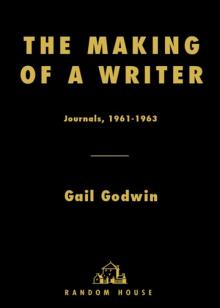 The Making of a Writer
The Making of a Writer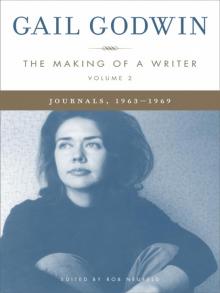 The Making of a Writer, Volume 2
The Making of a Writer, Volume 2 Old Lovegood Girls
Old Lovegood Girls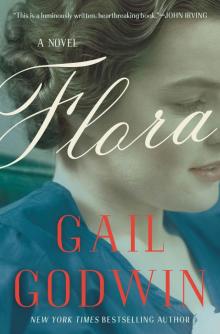 Flora
Flora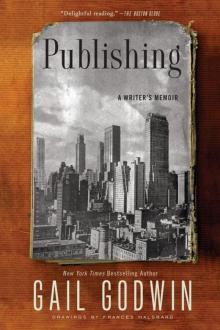 Publishing
Publishing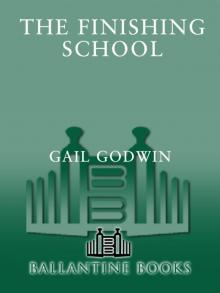 The Finishing School
The Finishing School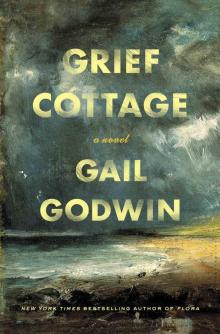 Grief Cottage
Grief Cottage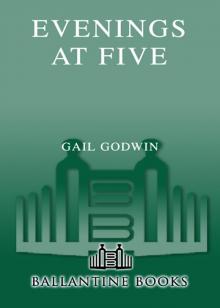 Evenings at Five
Evenings at Five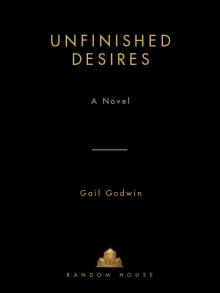 Unfinished Desires
Unfinished Desires